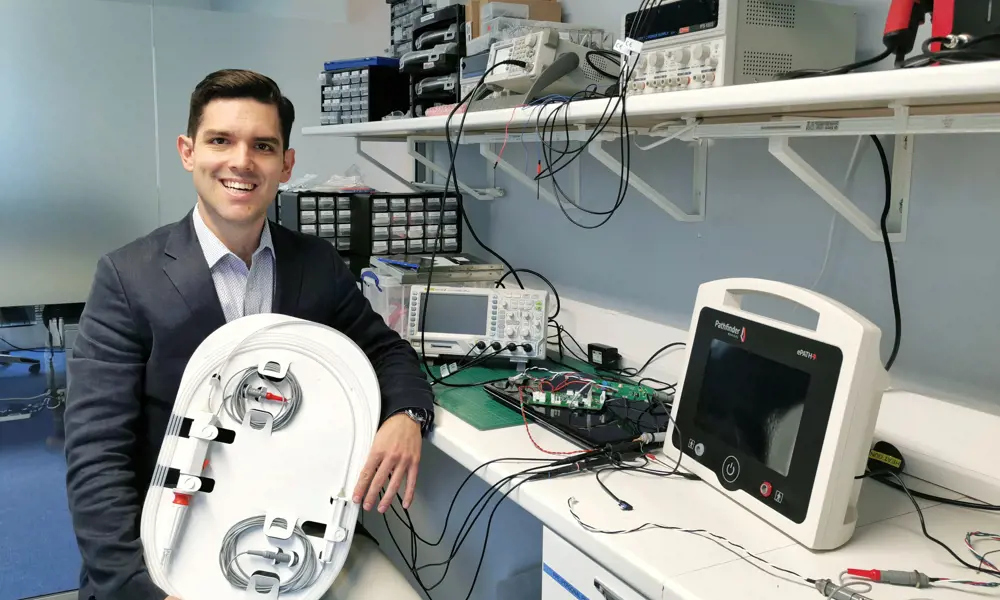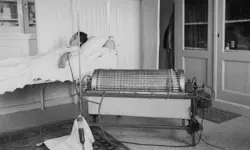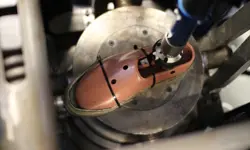
Reducing surgeries for dialysis patients
Over 3.5 million people worldwide have kidney conditions that require their blood to be routinely artificially filtered. This haemodialysis treatment means that their circulatory system needs to be regularly connected to a dialysis machine. To enable this, patients currently undergo a surgical procedure to prepare their vessels by forming a fistula, which is a connection between an artery and a vein in their arm. Pathfinder Medical’s electronic catheter guidance technology enables clinicians to connect these blood vessels in a much less invasive way.
Sorin Popa, Founder and CEO, studied electrical engineering before doing a master’s in bioengineering at Imperial College London. During this master’s, he learned of an unmet clinical need for a more reliable method for patients with kidney failure to receive dialysis. The technical challenge was how to safely enable clinicians to connect blood vessels together in a more reliable way and without requiring open surgery. Sorin applied his electrical engineering background and research experience to develop a completely new method based on electric field guidance that enables clinicians to precisely position catheters within blood vessels and connect them to form a fistula. This is a safe way for patients to receive haemodialysis and the same technology can also be used to bypass peripheral arterial blockages.
The ePATH’s electronic guidance system enables a clinician to cross between vessels that are quite far apart without open surgery.
The ePATH procedure replaces the current surgical option to access the vascular system, which has a more than 50% failure rate and is carried out by creating a dissection near the wrist. The ePATH’s electronic guidance system enables a clinician to cross between vessels that are quite far apart without open surgery. The catheter system can be used to connect blood vessels using a small covered tube known as a ‘stent graft’. It can also be used to bypass blocked vessels for those with peripheral arterial disease, which affects over 200 million patients globally.
Current vascular access options for dialysis patients often block up, requiring repeated costly repair operations (costing $4.6 billion a year in the US). The ePATH procedure improves outcomes for patients by reducing stress, discomfort and the risk of vascular access problems. It also reduces costs for healthcare providers by improving the reliability of the access site and reducing the likelihood of costly repeat procedures.
In just five years, Pathfinder Medical has gone from a prototype to receiving CE Mark regulatory approval and gaining UK and US patents on the technology. The device has been clinically tested and has further clinical trials with the NHS planned.
Sorin won the Royal Academy of Engineering’s ERA Foundation Award, becoming a member of the Enterprise Hub, a network for engineering entrepreneurs from across the UK. He recently won the Sir George Macfarlane Medal, presented to the overall winner of the RAEng Engineers Trust Young Engineer of the Year awards. It is awarded to a young engineer demonstrating excellence in the early stage of their career.
***
This article has been adapted from "Innovation Watch- Reducing surgeries for dialysis patients", which originally appeared in the print edition of Ingenia 84 (September 2020).
Keep up-to-date with Ingenia for free
SubscribeRelated content
Health & medical

A gamechanger in retinal scanning
2006 MacRobert Award winner Optos rapidly became a leading medical technology company and its scanners have taken millions of retinal images worldwide. There is even a display at the Science Museum featuring the Optos development. Alastair Atkinson, of the award-winning team, describes the personal tragedy that was the trigger for the creation of Optos.

Kidney dialysis
Small haemodialysis machines have been developed that will allow more people to treat themselves at home. The SC+ system that has been developed is lighter, smaller and easier to use than existing machines.

Engineering polymath wins major award
The 2015 Queen Elizabeth Prize for Engineering has been awarded to the ground-breaking chemical engineer Dr Robert Langer FREng for his revolutionary advances and leadership in engineering at the interface between chemistry and medicine.

Blast mitigation and injury treatment
The Royal British Legion Centre for Blast Injury Studies is a world-renowned research facility based at Imperial College London. Its director, Professor Anthony Bull FREng, explains how a multidisciplinary team is helping protect, treat and rehabilitate people who are exposed to explosive forces.
Other content from Ingenia
Quick read

- Environment & sustainability
- Opinion
A young engineer’s perspective on the good, the bad and the ugly of COP27

- Environment & sustainability
- Issue 95
How do we pay for net zero technologies?
Quick read

- Transport
- Mechanical
- How I got here
Electrifying trains and STEMAZING outreach

- Civil & structural
- Environment & sustainability
- Issue 95